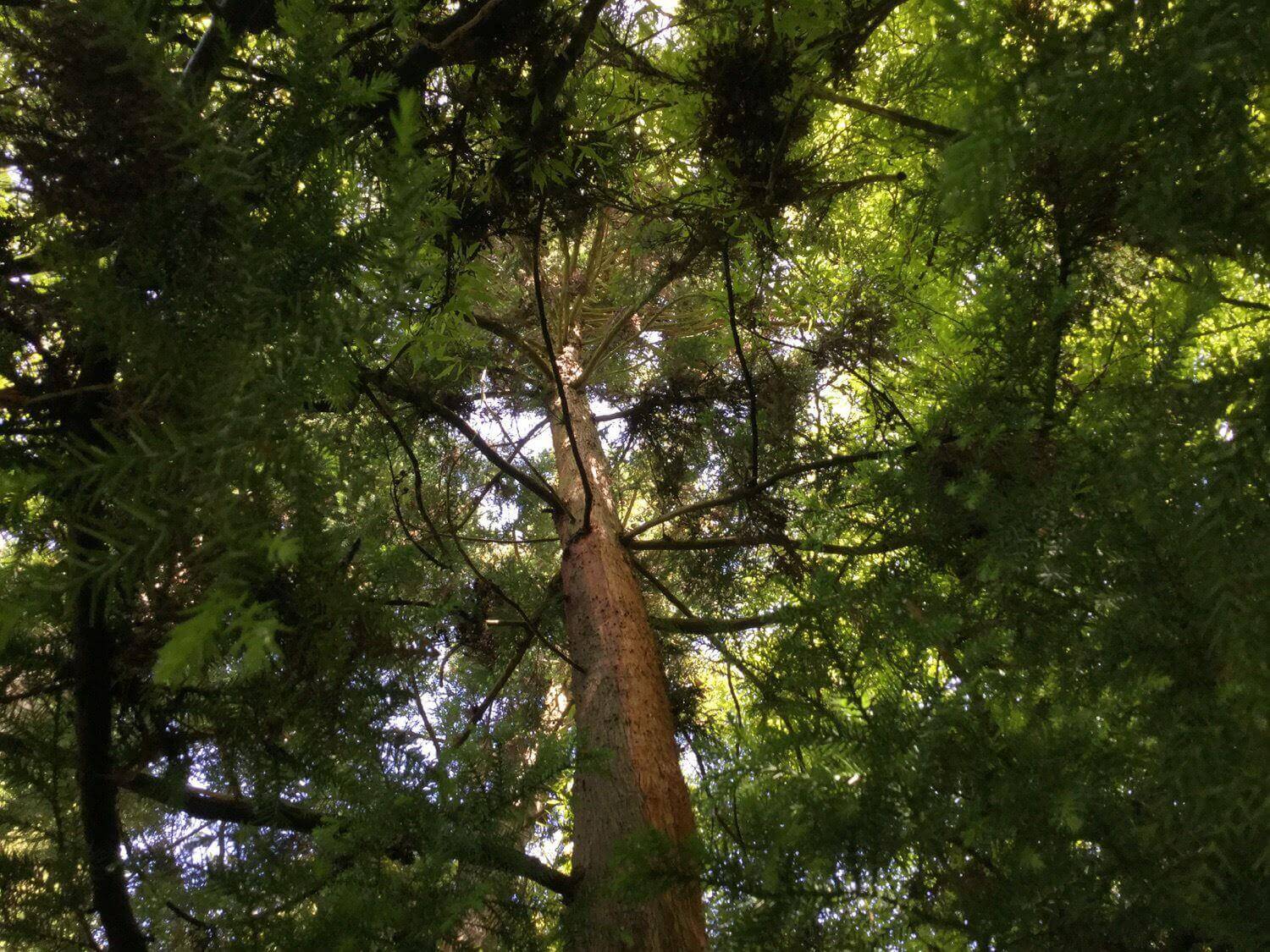
Curator’s Corner – Cryptomeria japonica
Valued for its beauty and rot-resistant wood, Cryptomeria japonica – Japan’s National Tree.
Profile
Scientific name: Cryptomeria japonica
Family: Cupressaceae
Environment: Forests of rich, deep, well-draining acidic soils with sufficient moisture. Shelter from high winds. Sun or partial shade.
Bloom: Fall
Plant type: conifer tree
Uses: Logging and wood harvesting, ornamental
Location: San Francisco Botanical Garden‘s Asian Discovery Garden (XY-2097*A, *B, *C, *D in beds 10C, 10D, and 10E), the Moon Viewing Garden (1982-0223*A in 52A), and in the Japanese Tea Garden near the Pagoda

C. japonica features spirally arranged, awl-shaped needles that are 6-20 mm long, curve inward, and range in color from bluish-green in summer months, to bronzy in winter.
Cryptomeria japonica, a monotypic species, is the sole member of the genus Cryptomeria. Despite its common name, “Japanese cedar,” it is not a true cedar, though it is classified within the same gymnosperm subset as cedars (Cedrus sp.), conifers. Key characteristics of conifers include being mostly evergreen, having needle-or-scale-like leaves with a waxy coating to retain moisture, and the production of seed-bearing cones rather than flowers. C. japonica features spirally arranged, awl-shaped needles that are 6-20 mm long, curve inward, and range in color from bluish-green in summer months, to bronzy in winter. At the tips of its wide-spread branches, dark brown, globular cones can be found, ranging from 1.3 to 2.5 cm in diameter, ripening in autumn. Its stout trunk narrows as it reaches a typical height between 50-60 ft in cultivation, and 180 ft in the wild. Although widely cultivated, the International Union for Conservation of Nature’s (IUCN) Red List indexes C. japonica as Near Threatened.
Endemic to Japan, C. japonica’s natural distribution is primarily on the islands on Honshu, Shikoku, and Yakushima. Historically, the species was widespread, but extensive logging over the past 1,000 years has resulted in fragmented populations and discontinued distributions, leaving few remaining old-growth forests. Yakushima is one of the last places with extant forests of C. japonica, where it forms roughly 50% of the tree cover in mixed evergreen forests at elevations between 600-1800 meters. These forests also host a variety of other conifers, as well as angiosperms, and are characterized by diverse populations of cryptogams; all have become vulnerable to the effects of climate change in recent years, through shifting precipitation patterns, resulting in the decline of lowland forests.
Japanese cedar, sugi (Cryptomeria japonica)



Due to its historic popularity in cultivation, it was once believed that Cryptomeria japonica was endemic to China, however genetic analysis has shown that even the most famous population found on Tianmu Mountain in China originated anthropogenically. Its reputation as a reliable source of timber led to its introduction to the Azores in the mid-19th century as well, where it is currently the most cultivated species in the archipelago. Primary uses of C. japonica include plywood, wood packaging, and prefabricated houses.
Gardens of Golden Gate Park is fortunate to have Crytomeria japonica, as well as numerous C. japonica cultivars, in its collections. Some of the oldest are located in San Francisco Botanical Garden‘s Asian Discovery Garden (XY-2097*A, *B, *C, *D in beds 10C, 10D, and 10E), the Moon Viewing Garden (1982-0223*A in 52A), and the Japanese Tea Garden near the Pagoda.
Text by Royal Jenkins, photos by Royal Jenkins and John Kipping




